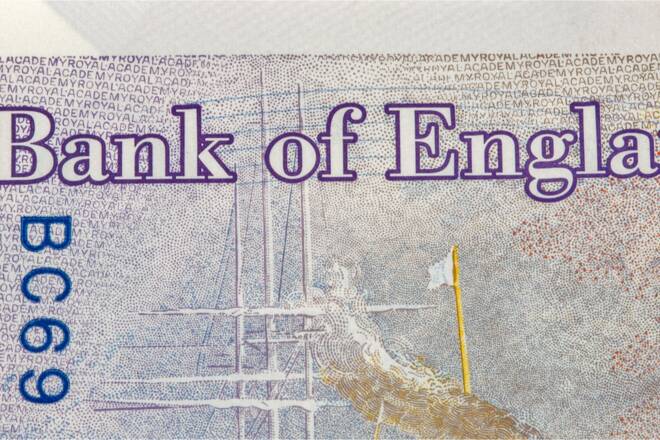Advertisement
Advertisement
UK Returns to Fiscal Orthodoxy, but Budget Discipline Tested by Difficult Economic Backdrop
By:
The return to orthodox fiscal policy by the UK’s new government is helping to restore confidence in the stability of public finances but a weaker fiscal framework makes further policy adjustment likely.
Chancellor of the Exchequer Jeremy Hunt’s 17 November “Autumn Statement” confirmed a mixture of direct and indirect tax increases and sharp reductions in public spending amounting to the roughly GBP 55bn (approximately 2.5% of GDP) needed for the government to meet its budgetary targets. The budget reflects the unusually difficult choices the Rishi Sunak government faces, with limited options given the difficult macroeconomic context.
Investor confidence in the UK (rated by Scope Ratings AA/Stable) is particularly crucial at this juncture because any additional debt issuance the UK Treasury is planning comes on top of the approximately 30% of the UK’s total outstanding debt that will have to be refinanced over the next five years.
Chancellor Hunt set out a long-term strategy for balancing public finances supported by the forecasts from the independent Office for Budget Responsibility (OBR). Hunt has based budget plans on a growth forecast averaging 1.3% a year between 2023-26 compared with the Liz Truss government’s unrealistic target of 2.5% growth a year (Figure 1).
This new forecast is aligned with our estimate of the UK’s medium-term annual growth potential of around 1.5% as a result of now-envisaged large cuts to government expenditure through 2026 and the sharper-than-expected tightening in financial conditions.
Figure 1. UK real GDP growth
Q4 2019 = 100
Hunt Relies on Backloaded Budgetary Tightening
The fiscal tightening announced in the Autumn Statement is backloaded, with a significant part of the spending cuts taking effect only from 2025. Debt-to-GDP is expected to increase in the medium term, peaking at 97.6% in 2025-26 and subsequently edging sideways to 97.3% in 2027-28, leaving much of the future debt consolidation to the next government given the next general election is due to take place in 2024. However, one of the biggest increases in taxation – freezing national-insurance thresholds for companies – will take effect from April 2023.
The fiscal framework is further diluted by the revision of two fiscal rules: net debt as a share of GDP set to fall by the fifth year of the rolling five-year forecast horizon rather than the previously-targeted third year, and public sector net borrowing targeted at less than 3% of GDP over the same period.
Since the targets within the fiscal framework are rolling targets, it offers a high degree of flexibility to adjust plans in future years. This makes it relatively easy for any ruling government to loosen fiscal policy to support the economy in the future if needed.
UK Loosens Fiscal Discipline; Fiscal Framework Less Tight Than Germany, Sweden
However, it also instils significantly less fiscal discipline in the medium term, aligning the UK’s framework more closely to France (rated AA/Stable)’s than those of higher, AAA-rated, countries in Europe. The fiscal frameworks of higher-rated sovereigns tend to have more binding targets such as Germany’s constitutionally-anchored debt brake or Sweden’s debt anchor, which keep debt levels close to 35% of GDP.
Higher borrowing costs for the government, businesses and households will curtail economic activity in the near to medium term and this is likely to result in a possibly severe correction in house prices. This comes on top of post-Brexit constraints on UK trade holding back future growth as the country’s dealings with its largest trading partner, the EU, become more difficult and costly.
A period of political and policy stability will be important for the UK to solidify its restored fiscal credibility and allow a more stable environment to support business investment, vital given the difficult economic context. Following the severe market reaction to the previous mini-budget, major political infighting within the ruling Conservative Party is likely to remain subdued in the near term.
Fundamental differences within the party remain. Political infighting may reignite in the future. Some of the planned spending cuts and tax rises are unpopular with influential wings of the ruling party – while many voters are struggling to cope with the rising cost of living, leading to opposition Labour Party’s large lead in opinion polls. Any future changes in Conservative leadership or the election of a Labour government would result in new shifts in fiscal policy.
For a look at all of today’s economic events, check out our economic calendar.
Eiko Sievert is a Director in Sovereign and Public Sector ratings at Scope Ratings GmbH.
About the Author
Eiko Sievertcontributor
Eiko Sievert is an Executive Director in Scope’s Sovereign & Public Sector ratings group, responsible for ratings and research on a number of public-sector borrowers.
Advertisement
